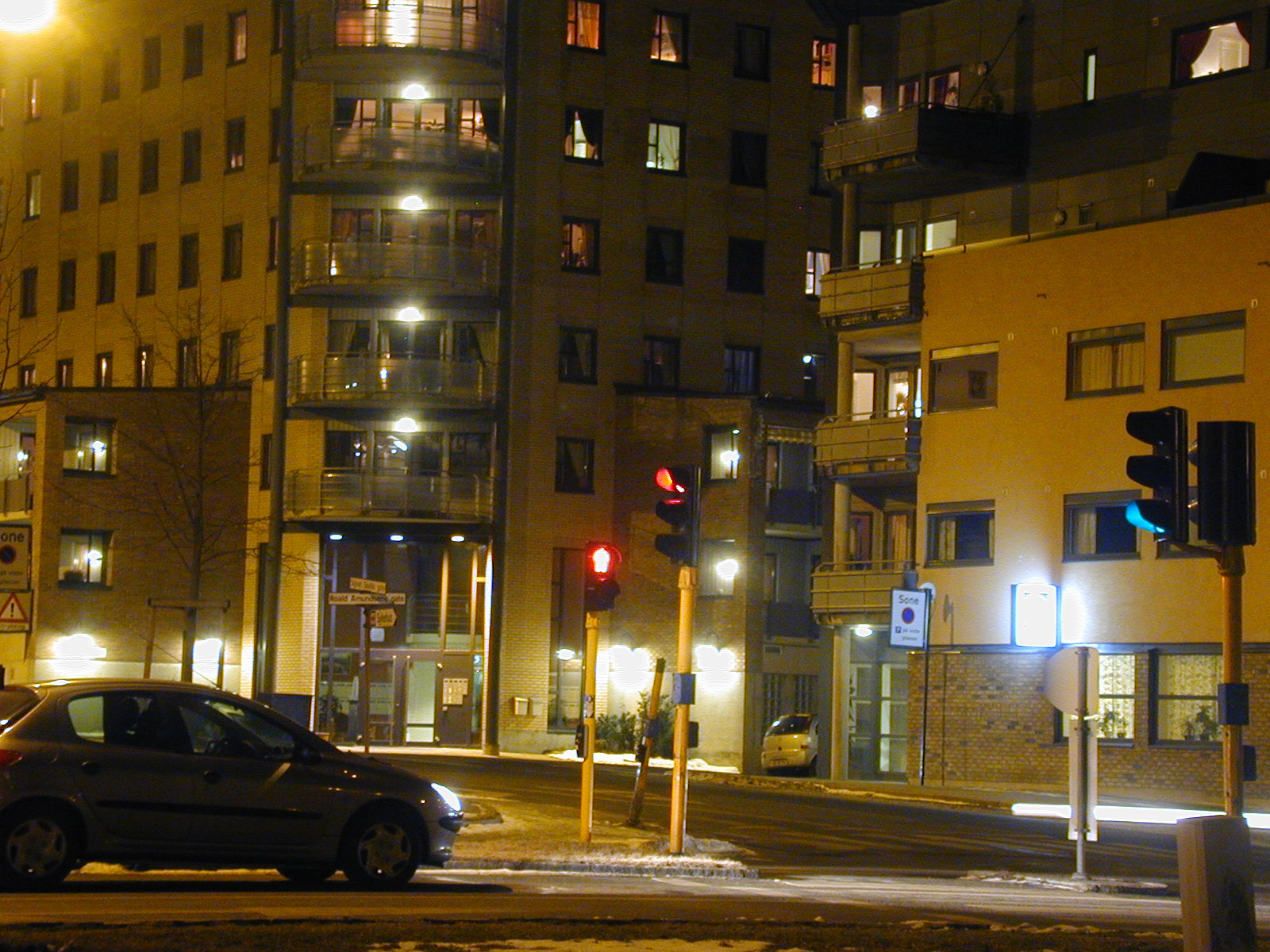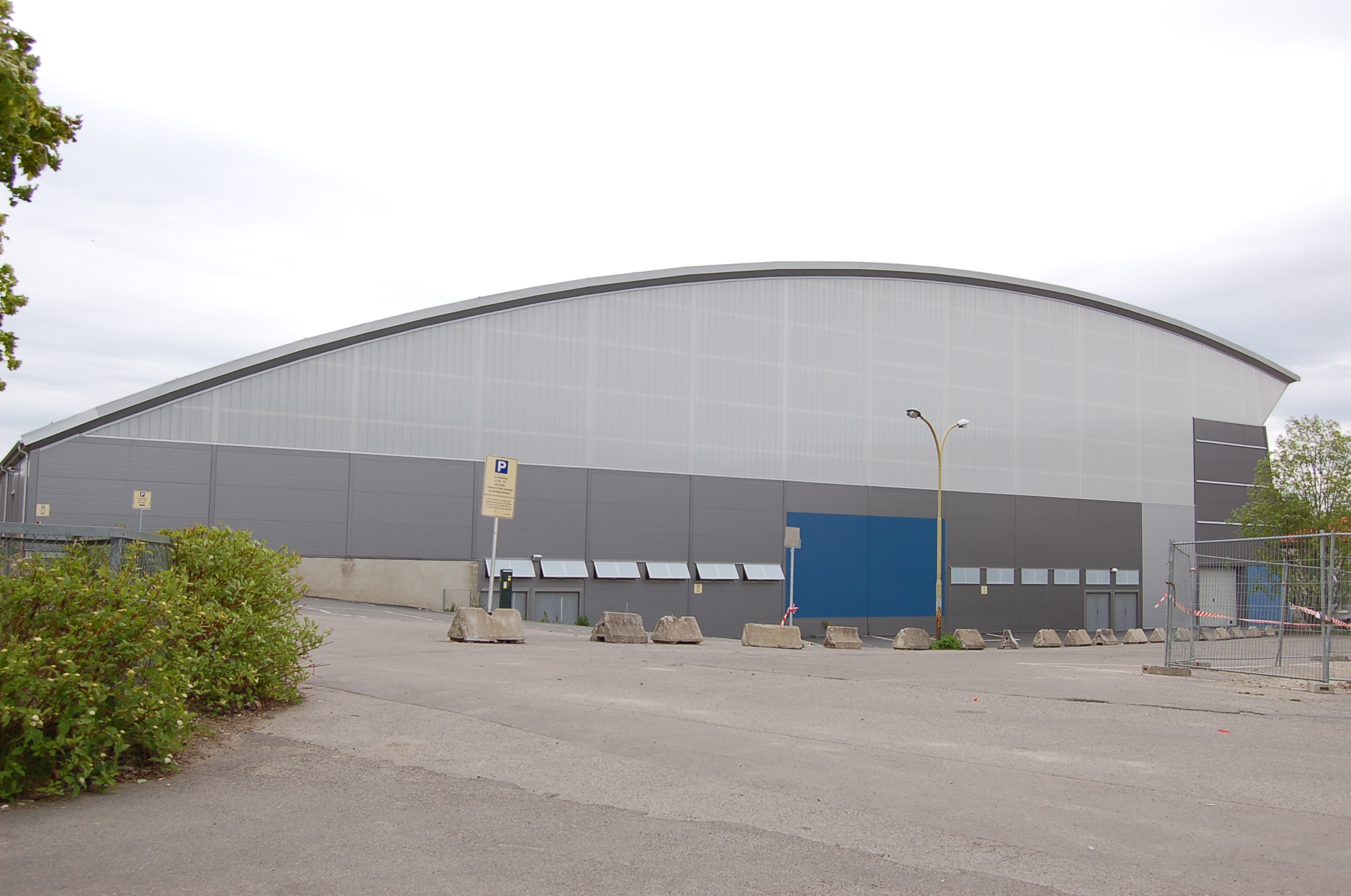|
2018–19 GET-ligaen Season
The 2018–19 GET-ligaen was the 80th season of Norway's premier ice hockey league, GET-ligaen. The regular season began on 8 September 2018, and was concluded on March 5, 2019. The playoffs to determine the 2019 Norwegian Ice Hockey Champions began March 7, and ended April 15, 2019. Participating teams } Team changes *After finishing second in the qualification for the 2018-19 season, Ringerike Panthers qualified for the GET-liga, replacing Kongsvinger Knights who finished fourth. *Due to long-term economic problems, Lørenskog IK failed to receive a professional license to play in the GET-liga. The vacant spot was offered first to Narvik IK, then to Kongsvinger Knights, who both declined the spot. Arenas Since Nye Jordal Amfi will not be completed until the 2020–21 season, Vålerenga used Furuset Forum as a temporary arena the whole season. Lillehammer repeated their Winter Classic match in Håkons Hall from the 2017-18 season against Storhamar. The match was ... [...More Info...] [...Related Items...] OR: [Wikipedia] [Google] [Baidu] |
GET-ligaen
Eliteserien, known as Fjordkraftligaen due to sponsorship, is the premier Norwegian ice hockey league, organised by the Norwegian Ice Hockey Association. It comprises 10 clubs and works on the premise of promotion and relegation, in which the two teams who placed last must play the top two teams from First Division (the league ranked immediately below) for the rights to play in the next Eliteserie season. History The Norwegian Ice Hockey Association (NIHF) was founded on 16 September 1934. The same season also saw the debut of a national league for ice hockey. It was then known as 1. divisjon (''1st division''), a name it held until 1990, when the elite clubs broke away and formed a new top league, Eliteserien (''The Elite League''). In 2004, telecommunications company UPC bought the naming rights for the league. UPC Norway changed its name to GET in 2006 and hence the name of the league was also altered. On October 1, 2020, NIHF and Fjordkraft announced that a new three years ... [...More Info...] [...Related Items...] OR: [Wikipedia] [Google] [Baidu] |
Lillehammer
Lillehammer () is a municipality in Innlandet county, Norway. It is located in the traditional district of Gudbrandsdal. The administrative centre of the municipality is the town of Lillehammer. Some of the more notable villages in the municipality include Fåberg, Hunderfossen, Jørstadmoen, Vingnes, and Vingrom. The municipality is the 211th largest by area out of the 356 municipalities in Norway. Lillehammer is the 38th most populous municipality in Norway with a population of 28,425. The municipality's population density is and its population has increased by 6.2% over the previous 10-year period. The town of Lillehammer is the largest urban centre in the municipality. It lies in the central part of the municipality and it is surrounded by more rural areas. The town centre is a late nineteenth-century concentration of wooden houses, which enjoys a picturesque location overlooking the northern part of lake Mjøsa and the river Lågen, surrounded by mountains. Lillehamm ... [...More Info...] [...Related Items...] OR: [Wikipedia] [Google] [Baidu] |
Fredrikstad
Fredrikstad (; previously ''Frederiksstad''; literally "Fredrik's Town") is a city and municipality in Viken county, Norway. The administrative centre of the municipality is the city of Fredrikstad. The city of Fredrikstad was founded in 1567 by King Frederick II, and established as a municipality on 1 January 1838 (see '' formannskapsdistrikt''). The rural municipality of Glemmen was merged with Fredrikstad on 1 January 1964. The rural municipalities of Borge, Onsøy, Kråkerøy, and Rolvsøy were merged with Fredrikstad on 1 January 1994. The city straddles the river Glomma where it meets the Skagerrak, about from the Sweden border. Along with neighboring Sarpsborg, Fredrikstad forms the fifth largest city in Norway: Fredrikstad/Sarpsborg. As of 30 September 2021, according to Statistics Norway, these two municipalities have a total population of 141,708 with 83,761 in Fredrikstad and 57,947 in Sarpsborg. Fredrikstad was built at the mouth of Glomma as a replacement af ... [...More Info...] [...Related Items...] OR: [Wikipedia] [Google] [Baidu] |
DNB Arena (Stavanger)
DNB Arena is an indoor ice hockey rink in Stavanger, Norway, and home to the Fjordkraftligaen side Stavanger Oilers. Opened ahead of the 2012–13 season, the arena has a capacity for 4,500 spectators during ice hockey matches and 6,000 during concerts, including 36 executive boxes. The rink is unusual for Norway in that it has the National Hockey League rink size. The building is designed by Arkitektkontoret Jobb and is named for DNB, a Norwegian banking group. Plans for a new venue to replace the aging Stavanger Ishall were first articulated by club-owner Tore Christiansen in 2006. Construction started in May 2011, with Kruse Smith as the main contractor. Construction cost 210 million Norwegian krone (NOK). The venue is owned by the Oilers' investment company, which receives a combined 9 million per year from DNB and the municipality. The arena hosted group stages of 2012–13 IIHF Continental Cup and 2013 IIHF Women's World Championship Division I. Construction Plans ... [...More Info...] [...Related Items...] OR: [Wikipedia] [Google] [Baidu] |
Stavanger
Stavanger (, , American English, US usually , ) is a city and municipalities of Norway, municipality in Norway. It is the fourth largest city and third largest metropolitan area in Norway (through conurbation with neighboring Sandnes) and the administrative center of Rogaland county. The municipality is the fourth most populous in Norway. Located on the Stavanger Peninsula in southwest Norway, Stavanger counts its official founding year as 1125, the year the Stavanger Cathedral was completed. Stavanger's core is to a large degree 18th- and 19th-century wooden houses that are protected and considered part of the city's cultural heritage. This has caused the town center and inner city to retain a small-town character with an unusually high ratio of detached houses, and has contributed significantly to spreading the city's population growth to outlying parts of Greater Stavanger. The city's population rapidly grew in the late 20th century due to its oil industry. Stavanger is known ... [...More Info...] [...Related Items...] OR: [Wikipedia] [Google] [Baidu] |
Sparta Amfi
Sparta Amfi is an indoor ice hockey rink located in Sarpsborg, Norway. The 3,900-spectator venue is the home of Sparta Sarpsborg and Sarpsborg Skøyteklubb. The arena opened in 1963 as the first indoor ice rink in Norway. Major upgrades were carried out in 2006 and 2012, and a second rink opened in 2007. History IL Sparta took initiative to start an ice hockey club in 1958 and invited to a public meeting on 28 October at Festiviteten. This meeting spurred interest both for an ice hockey team, but also for the construction of an indoor ice hockey venue. The sports council was contacted and IL Sparta proposed that a municipal rink be built at Torsbekkdalen, next to Sarpsborg Stadion. However, the site was found to be unsuitable, both of economic and technical reasons. In November 1959 the club's annual meeting approved that it start an ice hockey team. At first an outdoor, natural ice stadium was built next to the football field at Brevik, for which the state funded NOK 6000. ... [...More Info...] [...Related Items...] OR: [Wikipedia] [Google] [Baidu] |
Sarpsborg
Sarpsborg ( or ), historically Borg, is a city and municipality in Viken county, Norway. The administrative centre of the municipality is the city of Sarpsborg. Sarpsborg is part of the fifth largest urban area in Norway when paired with neighbouring Fredrikstad. As of 1 January 2018, according to Statistics Norway these two municipalities have a total population of 136,127 with 55,840 in Sarpsborg and 81,278 in Fredrikstad. Borregaard Industries is, and always has been, the most important industry in the city. The city is also the home of Borg Bryggerier, part of the Hansa Borg Bryggerier, which is Norway's second largest brewery-group. General information Name In Norse times the city was just called ''Borg'' (from ''borg'' which means " castle"). The background for this was the fortification built by Olav Haraldsson (see History section). Later the genitive case of the name of the waterfall ''Sarpr'' ( Sarp Falls) was added, it's unclear how Sarpsborg received thi ... [...More Info...] [...Related Items...] OR: [Wikipedia] [Google] [Baidu] |
Hønefoss
__NOTOC__ Hønefoss is a town and the administrative center of the municipality of Ringerike in Buskerud county, Norway. Hønefoss is an industrial center of inner Østlandet, containing several factories and other industry. As of 1 January 2008, Hønefoss has 14,177 inhabitants. In 1852, Hønefoss received town status and was separated from Norderhov. In 1964, Hønefoss ceased being a separate municipality and became part of Ringerike. Etymology The town is named after Hønefossen, a waterfall on the Begna River. The first element is the name of the old farm ''Hønen'' (Old Norse ''*Hœnvin''), the last element is ''foss'' meaning 'waterfall'. The name of the farm is a compound of a word ''*hœn-'' (with an unknown meaning) and ''vin'' f 'meadow'. Location Hønefoss is located 63 kilometres northwest by road from the Norwegian capital of Oslo. Hønefoss is situated north of Lake Tyrifjorden. At Hønefoss, the Begna flows together with the Randselva river just below Hønefosse ... [...More Info...] [...Related Items...] OR: [Wikipedia] [Google] [Baidu] |
Gjøvik Olympic Cavern Hall
Gjøvik Olympic Cavern Hall ( no, Gjøvik Olympiske Fjellhall or ) is an ice hockey rink located within a mountain hall in Gjøvik, Norway. With a capacity for 5,500 spectators, the hall also features a 25-meter swimming pool and telecommunications installations. Opened in 1993 and costing 134.6 million Norwegian krone (NOK), it was built for the 1994 Winter Olympics, where it hosted 16 ice hockey matches. It is the home of Gjøvik Hockey, has hosted the 1995 World Short Track Speed Skating Championships and is also used as an event venue. The structure is the world's largest cavern hall for public use. Construction Because half the country's surface consists of exposed rock, Norway has a tradition of building mountain cavern halls for many purposes, from tunnels via power plants to sport centers. These often double up as bomb shelters. Gjøvik Municipality opened Norway's first underground swimming pool in 1974. The idea to build an underground ice rink came from Consulting E ... [...More Info...] [...Related Items...] OR: [Wikipedia] [Google] [Baidu] |
Manglerudhallen
Manglerudhallen is the name of two arenas, an indoor ice hockey arena and a multi-purpose indoor arena, located in Manglerud, Oslo, Norway. The capacity of the ice hockey arena is 2,000 and it was opened in 1979. at hockey.no It is the home arena of the ice hockey
Ice hockey (or simply hockey) is a team sport played on ice skates, usually on an ice skating rink with lines and markings specific to the sport. It belongs to a family of sports called hockey. In ice hockey, two opposing teams use ice hock ... ...
[...More Info...] [...Related Items...] OR: [Wikipedia] [Google] [Baidu] |
Oslo
Oslo ( , , or ; sma, Oslove) is the capital and most populous city of Norway. It constitutes both a county and a municipality. The municipality of Oslo had a population of in 2022, while the city's greater urban area had a population of in 2019, and the metropolitan area had an estimated population of in 2021. During the Viking Age the area was part of Viken. Oslo was founded as a city at the end of the Viking Age in 1040 under the name Ánslo, and established as a ''kaupstad'' or trading place in 1048 by Harald Hardrada. The city was elevated to a bishopric in 1070 and a capital under Haakon V of Norway around 1300. Personal unions with Denmark from 1397 to 1523 and again from 1536 to 1814 reduced its influence. After being destroyed by a fire in 1624, during the reign of King Christian IV, a new city was built closer to Akershus Fortress and named Christiania in honour of the king. It became a municipality ('' formannskapsdistrikt'') on 1 January 1838. The city fu ... [...More Info...] [...Related Items...] OR: [Wikipedia] [Google] [Baidu] |



